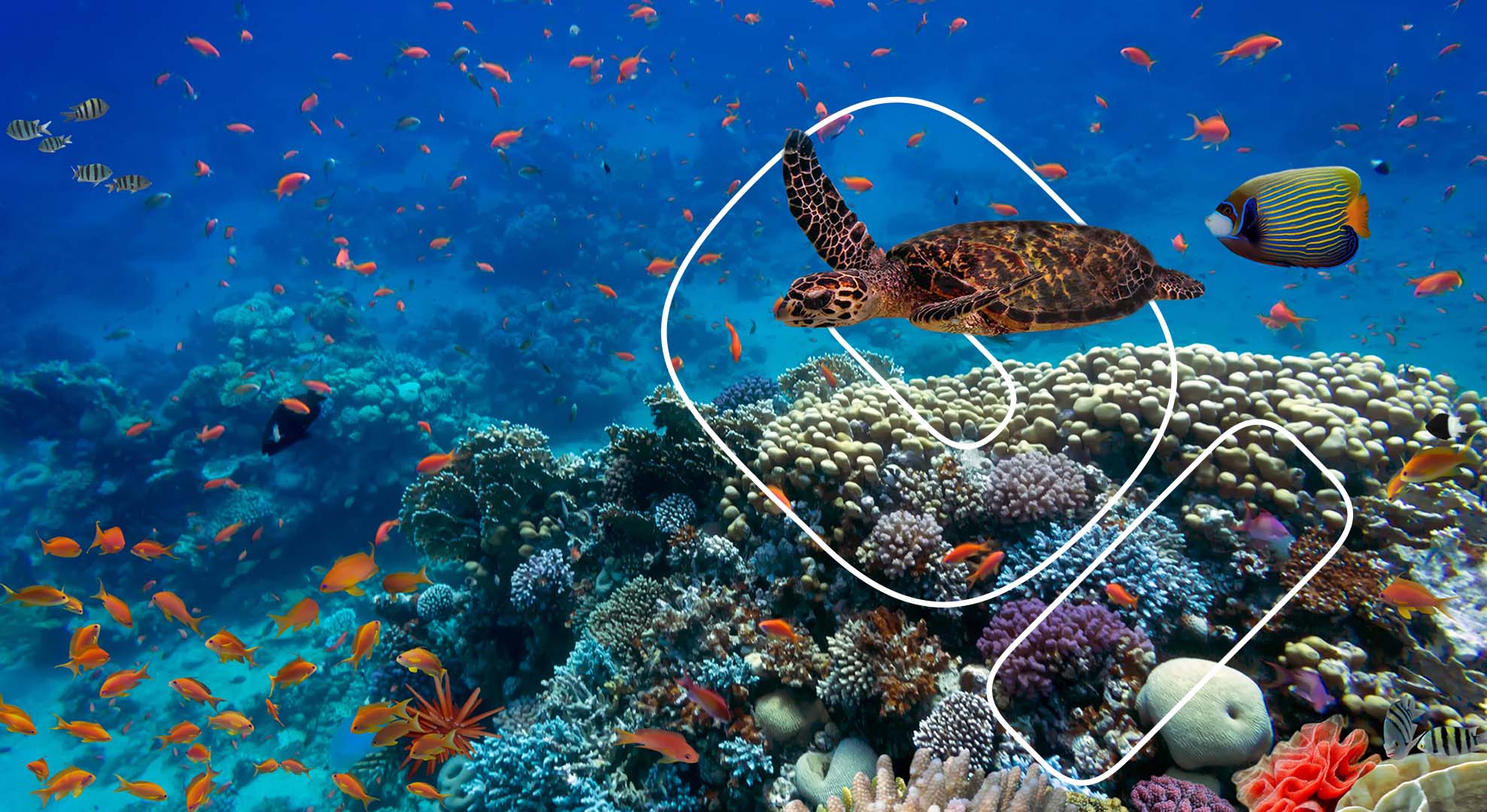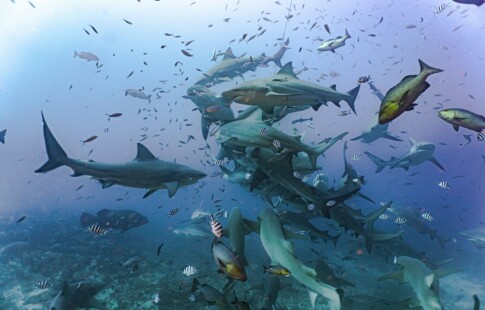
What Are the Major Biodiversity Threats?
We are reader-supported. When you buy through links on our site, we may earn affiliate commission.
Last Updated: March 25, 2024
Biodiversity is essential for any ecosystem, and it means the diversity of life. It ensures the natural sustainability of life on earth for both the current population and future generations. An area with good biodiversity will involve different life forms and species, including plants, animals, insects, fungi and other organisms. They all link together to form ecosystems to support life and maintain a balance.
The increasing population of humans has put an immense amount of pressure on the planet. As of January 1, 2024, Earth had a population of 8,019,876,189 people. Having more people leads to the need for more resources, like water, land and food, which can ultimately upset the balance of an ecosystem and cause a loss of biodiversity.
Wildlife populations around the globe have decreased by 69% since the 1970s. If the rate of biodiversity loss continues to increase, it could destroy human life. Ecosystems need a variety of species to stay healthy, and humans need biodiversity for food security and water. Without nature, there would be nothing.
What Are the Major Biodiversity Threats?
Below are the major threats to biodiversity. Hopefully, this will help you understand why humans need to support biodiversity and change to sustain future generations.
1. Habitat Loss and Degradation
Biodiversity is threatened when there is significant habitat loss or degradation. This happens when an area that was once used as a habitat is no longer inhabited by nature. Things like deforestation, mining, agriculture and industrial activities often remove crucial habitat space for wildlife and plants.
However, natural events could also cause habitat degradation. This would include events such as hurricanes, volcanic eruptions and forest fires.
Activities like raw material extraction because of increased consumerism puts stress on more than just mines. Lithium and cobalt mining for batteries stresses wildlife because of destruction and operational pollution. However, it also impacts biodiversity through humans.
Numerous workers are in these fields because of necessity, deepening a community’s degree of poverty. Poverty is directly correlated with areas with lower environmental quality and increased degradation, which translates to habitat loss.
2. Invasive Species
Another reason for the loss of biodiversity is the introduction of invasive species. Invasive species include any plants or animals that are unnatural or non-native to an ecosystem. These species threaten and often outcompete the plants and animals already present in a habitat.
For example, the Emerald Ash Borer has wiped out a considerable portion of the ash trees in North America. It was likely introduced through cargo materials and has created a loss in biodiversity.
In 2022, the invasive spotted lanternfly became almost like a plague. It still persists in 2024. They have resilient and high breeding rates and tackle over 70 species of trees. Many regions where they entered declared emergencies as it disrupted the success of countless local businesses, from farms to wineries.
Invasive species are more than insects and other animals. Invasive plant species are just as threatening. These are a few of the most prominent as of 2024:
- Autumn Olive
- Japanese Barberry
- Multiflora Rose
- Tree of Heaven
- Winged Eyonymous
3. Pollution
Whether the pollution is in the water, air or land, any form of pollution is a threat to biodiversity. Toxic synthetic chemicals and products enter ecosystems, which has led to the extinction of animal and plant species.
Sulfur and nitrogen are some of the worst offenders, harming soil and water. These pollutants hinder crop yields and enter aquatic species. This unfortunate combo is responsible for acid rain, encouraging acidification in everything it touches. Acidification in the water kills necessary phytoplankton the ocean needs to thrive, and pH-disrupted soil means food doesn’t hit dinner tables in a cost-effective way. Eventually, they could reach humans through trophic transfer — the consumption of pollutants through food that is already contaminated.
Even natural substances can become pollution if they’re overabundant in a particular area. Plastic pollutants have gone deep into the oceans and have even been found at microscopic levels on Mount Everest and in the human digestive system.
4. Climate Change
The increase in global temperatures has had significant effects on the environment. Seasons are coming earlier or later than expected, which can leave animals struggling to find resources to survive and adapt. The world is changing so fast that every species can’t adapt fast enough.
It’s such an issue the COP28 conference addressed funding adaptation efforts to mitigate some of the intensity of climate change during the transition to a greener planet. It also was the first time the Summit recognized the triple planetary crisis, where biodiversity loss is directly related to climate change and pollution.
Additionally, climate change has led to a rise in sea levels and a decreasing amount of sea ice, which has affected both animals in the sea and on land. As climate and temperatures continue to change, the threats to biodiversity will only increase.
5. Overexploitation of Natural Resources
Activities such as targeted hunting, fishing and gathering of animals, plants and other natural resources threaten biodiversity. The loss of large populations of animals or plants in a short amount of time can cause a rippling effect on the other wildlife in that region. For example, if a primary predator is over-fished, there will be nothing to keep prey populations in check. Furthermore, overexploitation of non-renewable resources will affect daily human life.
6. Human Activity and Population
The increase in the population of humans has had a significant impact on biodiversity. About 200 years ago, less than 1 billion people were living on earth. By the year 2050, the population is expected to be at 9.8 billion people.
As the human population increases, the need for resources like food, water and shelter will increase, and more human activity will occur. Biodiversity is likely to decrease because of those needs, as well as urbanization and development. People will need places to live, work and play, so regions once filled with forests and diversity will become concrete jungles, forcing animals to leave their habitats and depleting the area of plants.
7. Wildlife Trading
Countless species are at risk of extinction because of poachers. Beloved animals like African elephants, Hawksbill turtles, Amur leopards, and Black rhinos are hunted constantly and sold illegally internationally. Killing and trading these animals disrupts food chains by removing environmentally critical predators, which encourages invasive species even more. Additionally, hunters may unintentionally kill non-targeted species in the process of getting what they want. This means all nearby species are at risk, including plants.
However, things are getting better for these threatened species. In 2023, there were numerous wins, including increased protections for hippos and expanded technologies for tracking at-risk species.
How You Can Help Preserve Biodiversity
Although you may not see these threats every day, they continually wreak havoc on biodiversity. There are ways you can help conserve and promote biodiversity, though.
- Support local farms to keep money circulating in the local economy and help farmers conserve biodiversity.
- Plant native plants in your yard and garden. Native plants can often outcompete any invasive species to promote biodiversity.
- Respect local habitats wherever you go, whether it’s in your own community or across the globe.
- Purchase ethical and sustainable items, and try to reduce, reuse and recycle as much as possible.
- Speak out about biodiversity and teach others how they can preserve it.
- Take part in habitat restoration projects in your community.
Spread the Word
It’s time to get creative. Preserving biodiversity helps the planet flourish and ride faster toward sustainable development and goals set forth by leading regulatory bodies. Just because a plant or animal species doesn’t live near you doesn’t mean you don’t impact it. Every action individuals, corporations, and governments take has a ripple effect throughout the world. The sooner humans realize this, the faster all populations can adjust to better habits that protect habitats and their residents.
By preserving biodiversity, ecosystems can work and flourish for many years to come.
This was updated March 25, 2024, in order to provide more current information.
Share on
Like what you read? Join other Environment.co readers!
Get the latest updates on our planet by subscribing to the Environment.co newsletter!
About the author

Steve Russell
Steve is the Managing Editor of Environment.co and regularly contributes articles related to wildlife, biodiversity, and recycling. His passions include wildlife photography and bird watching.





